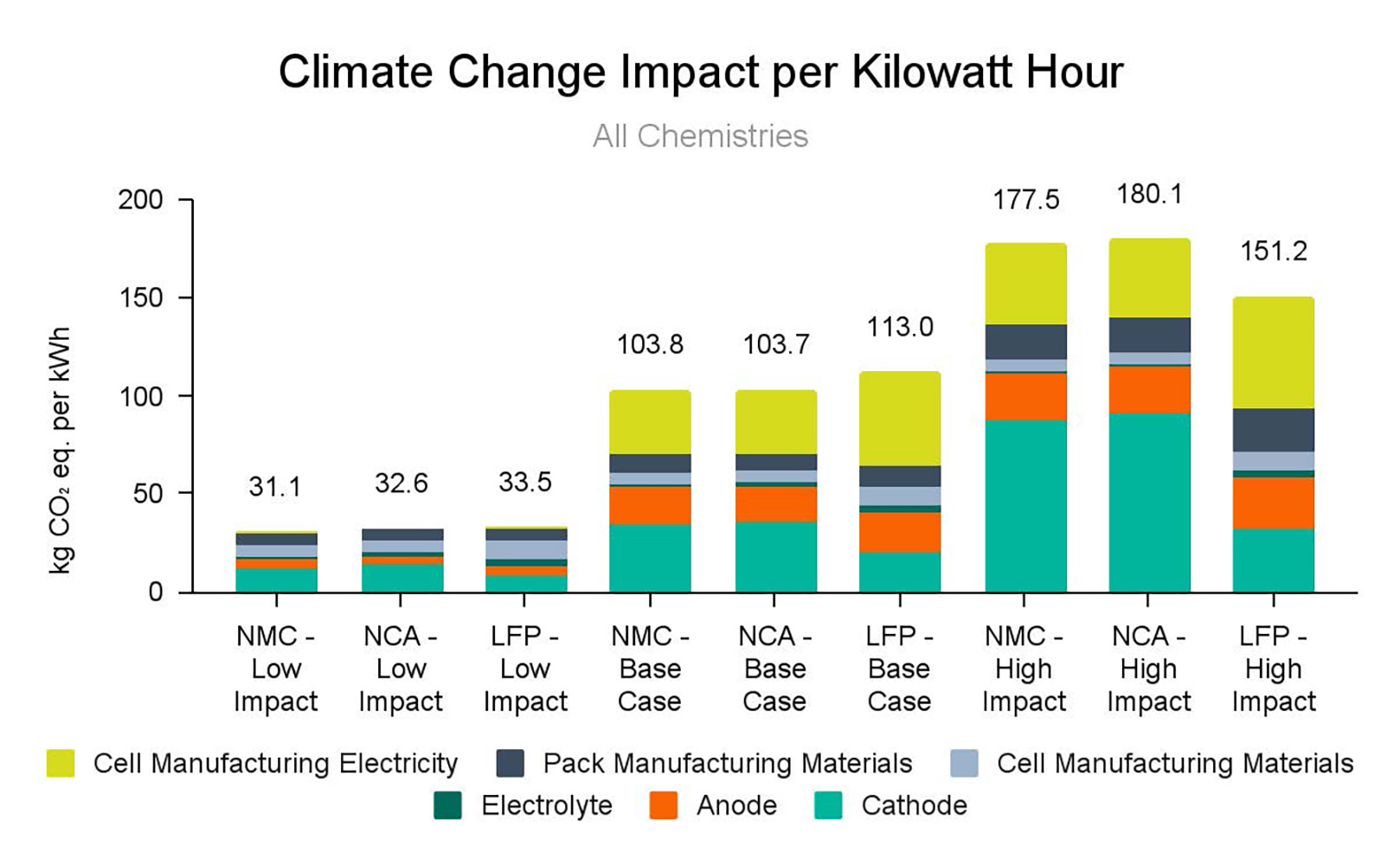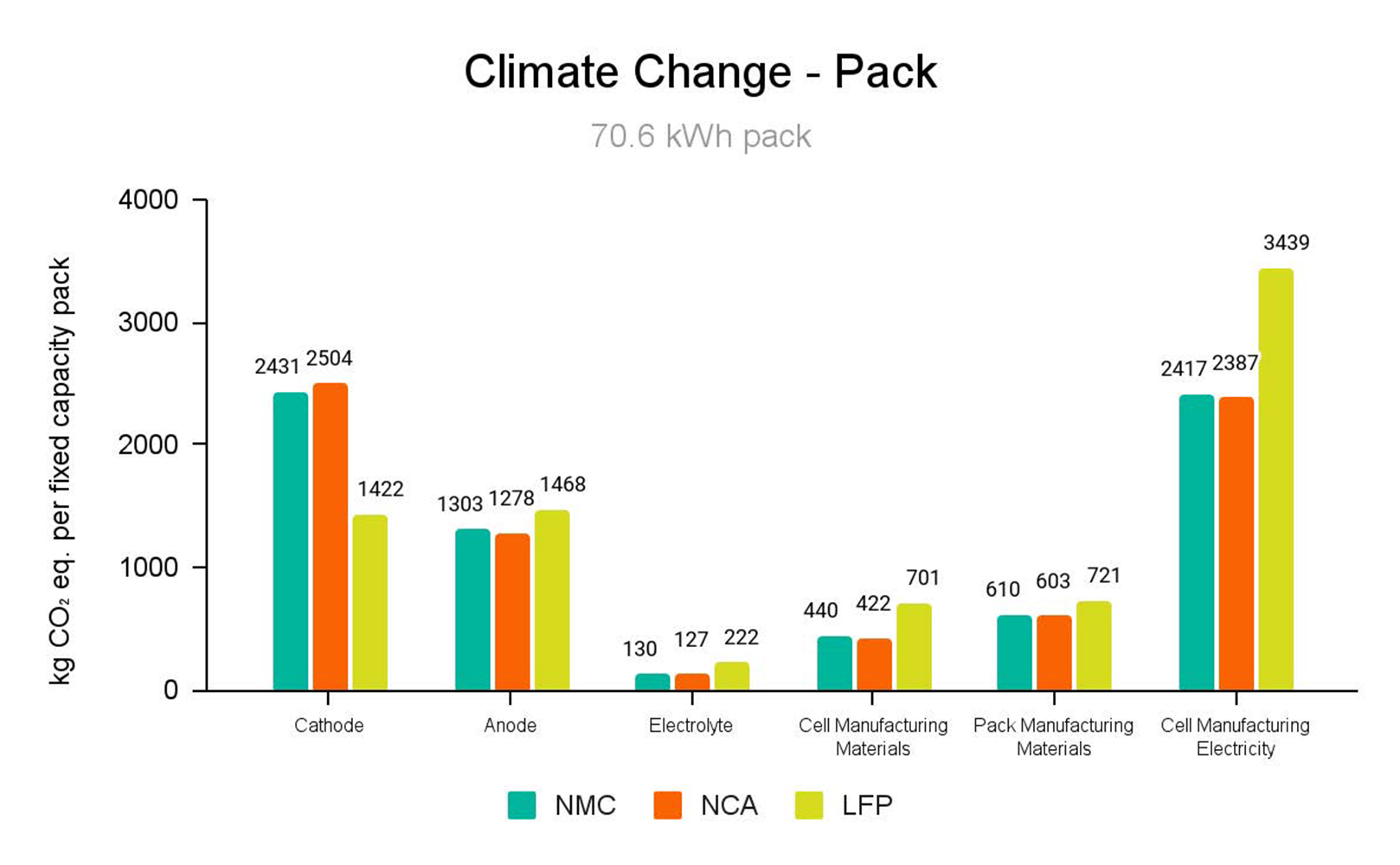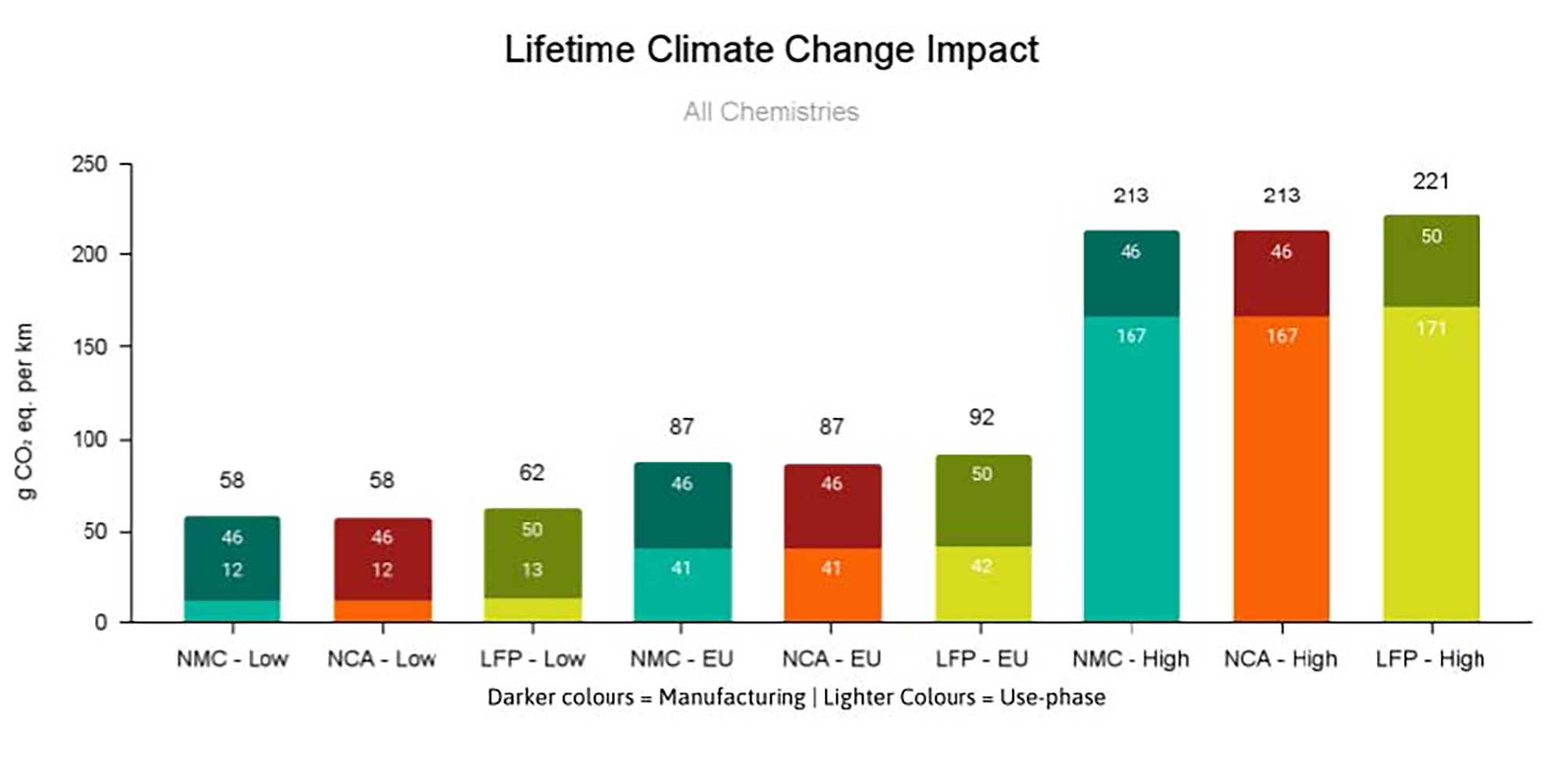In-Use EV Battery LCA
Electric Vehicle (EV) batteries will be an essential part of decarbonising transportation and cobalt will play a crucial part in this.
Cobalt Institute has worked with expert consultancy Minviro to develop a fully peer reviewed ISO 14040/14044 compliant lifecycle assessment, which addresses both the manufacturing and use of EV batteries.
This report analyses the climate change impacts of the manufacture and use of different types of lithium-ion (Li-ion) batteries:
- Lithium nickel manganese cobalt (NMC: 8:1:1),
- Lithium nickel cobalt aluminium (NCA: 8:1.5:0.5), and
- Lithium iron phosphate (LFP).
Both high and low impact scenarios are modelled to illustrate the risk and opportunity presented through sourcing materials and different manufacturing locations.

The cradle-to-gate climate change impacts of the different battery chemistries analysed is broadly similar. Furthermore, the climate change impact of a battery depends on the materials sourced and the electricity used (high impact), highlighting the importance of environmentally conscious raw material procurement and decarbonisation of manufacturing.
If that is pursued, NMC batteries have the potential to have the lowest climate change impact (low impact).

LFP batteries have the lowest cathode-related climate change impact of the battery chemistries analysed, but far higher cell manufacturing electricity impacts (Fig 6) due to its lower energy density and greater size.
Whilst the amount of anode active material required per LFP cell is around 65% that required per NMC cell or NCA cell, LFP cell capacity is significantly less due to its lower energy density. This means that per kWh, the anode contribution of LFP batteries is higher.

Lifetime emissions for packs of a fixed 70.6 kWh capacity are similar for all three chemistries.
Although the climate change impact per pack for LFP is around 9% higher than NMC and NCA, LFP has a longer cycle and a considerably longer maximum service life than NMC and NCA, delivering significantly more energy.
